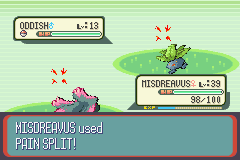- The Veldt – Ray Bradbury
In this short fictional story, the disturbing events about a family’s tragic downfall is shared. Happylife Home, a luxury building that listens to every command, is lived in by the Hadley family. Everything about this futuristic society seemed peaceful and loving at first glance. In fact, there’s even a crystal-walled room that can generate any virtual setting into reality (Bradbury 5). It all goes well until the Hadley children use their horrid thoughts to create twisted environments. The text depicts, “The hot straw smell of lion grass, the cool green smell of the hidden water hole, the great rusty smell of animals, the smell of dust like a red paprika in the hot air” (Bradbury 3). Completely upset with the children’s gruesome setting, the parents threatened them with the stoppage of the device. After a deceptive act, the children tricked their parents into the lion-infested room. As Bradbury wrote, ” . . . They turned and looked back at the beasts edging slowly forward crouching, tails stiff” (13). The innocent psychologist, who arrived shortly, had no idea that the Hadley children just violently and mercilessly murdered their own parents.
To prevent this situation from ever re-occurring, I would implement a 24/7 alert body and voice-recognition system. This would work similarly to a TSA scan, but analyzes every single intricate detail. This revolutionary device would be able to speak, process human truth/lies, and detect any abnormalities within the visitor. Before walking into the virtual-reality room, it would only allow specific users in once verification is complete. In this case, the Hadley parents would solely authorize themselves. Furthermore, I would advise HappyLife to create a child-friendly mode which contains pre-arranged E-rated settings that cannot be altered. Additionally, there should be a safe-word regulation in-place that freezes the entire system once repeated. By simply updating cybersecurity settings, the Hadley parents would’ve never succumbed to such a grim ending.

2. “The Ones Who Walk Away From Omelas” – Ursula K LeGuin
This morally paralyzing yet outstanding story written by LeGuin describes the citizens of Omela. In this disguised utopia, people are all genuinely cheerful. However, readers soon realize that this happiness comes with a frightening price. In the city slums, there lives a poor child who is physically, mentally, and emotionally malnourished. Instead of helping, the townspeople deliberately ignore the child and allow his/her grief to continue. LeGuin documents, “Yet it is their tears and anger, the trying of their generosity and the acceptance of their helplessness, which are perhaps the true source of the splendor of their lives” (4). As the Omela themselves know that their source of happiness causes direct harm to the child, they truly celebrate and enjoy what’s provided to them. Treating the harmless child as a sacrifice, they literally have to savor the freedom that they received in return. In this society, they’ve agreed that ‘if the child could be released, it would not get much good of its freedom: a little vague pleasure of warmth and food, no real doubt, but little more. It is too degraded and imbecile to know any real joy’ (LeGuin). It’s a painful story of moral compassion and choosing self-comfort over an pure soul.
In this story, it’s very hard to criticize what’s right from wrong. While I can partially see the citizens’ perspective, it would be devastating to live as the child. Therefore, I would like to introduce a device known as the ‘Pain Splitter’. Inspired off of a Pokemon Move, ‘Pain Split’, this device would literally transfer the child’s physically, emotional, & mental trauma upon citizens of Omela. The device is immortal, cannot be destroyed, and will automatically choose its user at the end of the year. This child, or any individual enduring the most pain in Omela, could then activate the machine once a year. A hex would then be casted on the citizens of Omela, and the pain would be divided accordingly. This isn’t a strategy of revenge, but rather a lesson that no-one should be left out. This device warns citizens to be wary of their selfishness and unmoral deeds. If one suffers, everyone must undergo the same calculated feeling. 
3. The Plague – Yan Leisheng
In this futuristic city, there is a unstoppable virus that is consuming everyone. The symptoms are as follows: “The skin became silicon dioxide—silica, stone. But the victim was not dead. The eyes could still blink and move” (Leisheng). This disgusting yet cruel disease involves a slow excruciating process that kills the victim. The main character, defending a women with the virus, got himself infected in the process. In the end, this apocalyptic world had nothing but destruction to offer.
In this case, I believe a ‘poison with poison’ tactic can be used to combat this virus. I call this invention the ‘Cryofreezer’, which literally does what the name indicates. By stepping in this freezer-like space, willing participants will freeze their core bodies for a year. This will not kill them, but will induce a hibernation-like state instead. It will be constantly monitored by ‘Crows’, but the device would be self-efficient in the case that humanity dies. The Cryofreezer would be carefully crafted using the upmost technology. It would have a usage rate of 50 years, and be assigned to a random user upon personal identification/set of agreements. If the virus does not disappear, the user would simply return to the machine over and over. Eventually, the goal is to have at least two humans survive, as the trace of the disease should be wiped out with time.

Leave a Reply